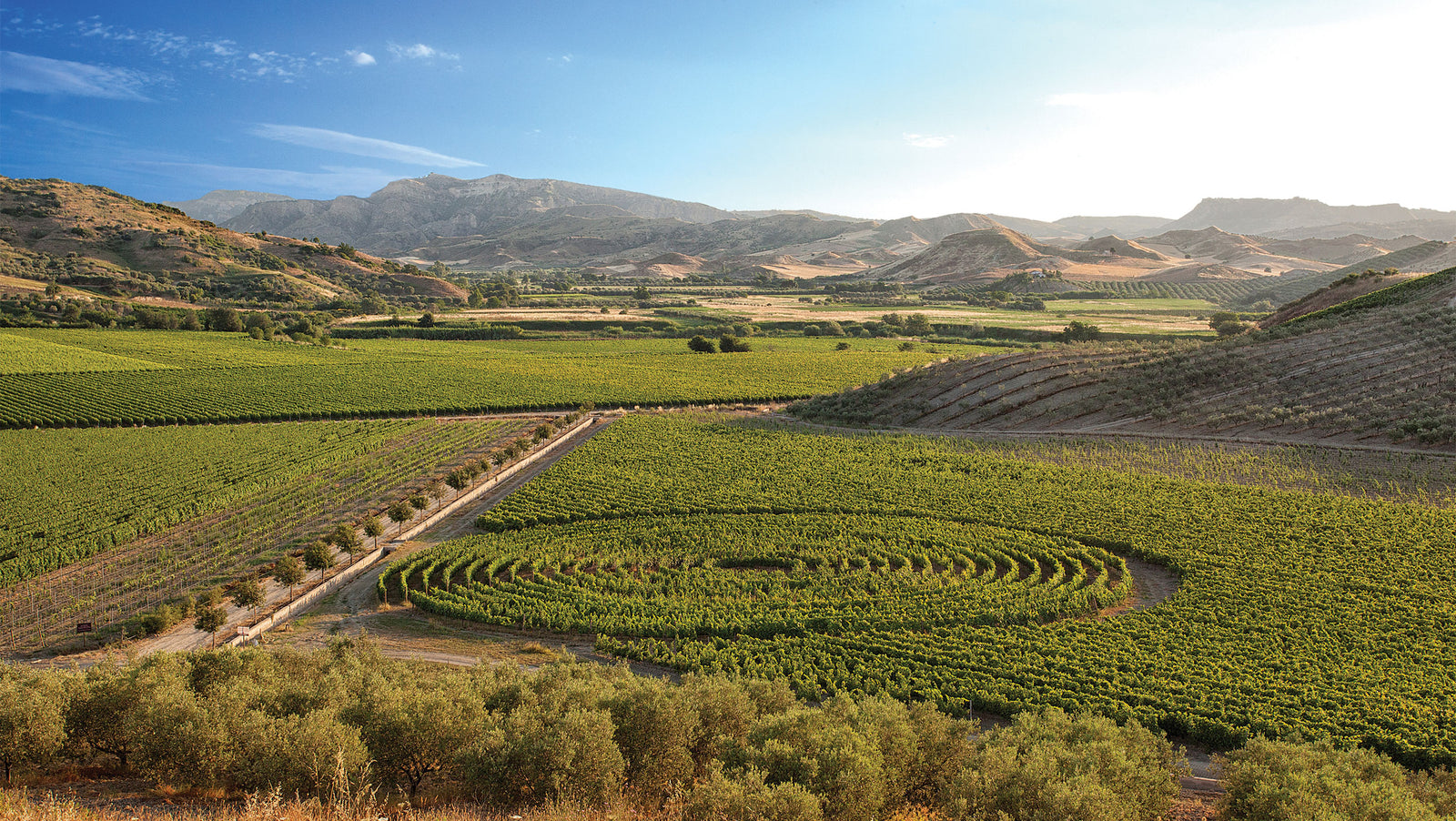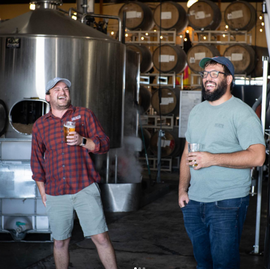Calabria is, in many ways, the opposite of Veneto, our destination last month. Rugged, ancient and complex, it is the southernmost region in mainland Italy, less than two nautical miles from Sicily, and the least visited; most of the travelers you’ll meet are either on their way somewhere else, or vacationing from another part of Calabria. Which is feature-not-bug for our purposes: other than tourists, iconic cityscapes, and most photographed piazza on the peninsula contenders, Calabria boasts all the amazingly specific regional (and sometimes village-level) variants on Italian archetypes - mountains, forests, beaches, food, wine, old stuff - that make endeavors like this club (hopefully) worth the time and investment. The alpine interior contains three national parks replete with waterfalls, lakes and gorges, the coastline is 500 miles of gorgeous beaches and dramatic sea cliffs, and the old stuff, in addition to being very, very old indeed, helps illustrate the extent to which Calabria, Italy and viticulture have always been co-fermented entities.
Once known as Magna Graecia ("Great Greece" in Latin) for the substantial ancient Greek settlements on its shores, Calabria was actually the first part of the country to get called Italy at all, well before the Romans extended the appellation to the entire peninsula. According to Greek legend, it all starts with viticulture: around 1500 BC a tribe called the Oenotri ("vine-cultivators"), settled in the area, their most famous king was named Italus - hence Italy. There are a few slightly more historically sourced explanations wherein “Italia” derives from different ancient terms for “bull” or “calf” but the upshot is nobody knows for sure, it's not definitively not about viticulture - hence, “Italy (ultimately) = wine” remains a living take (if not one I’d wanna defend at length.)
In any event, it is demonstrable that vino has been a part of every local crop grower’s daily ritual for millenia, though today Calabria is responsible for less commercially produced wine than almost any other region in Italy. This is due partly to geography - the rough coastline and mountainous interior made it difficult for mass industry to take hold - and also the lamentable history of poverty, corruption and resultant population drain Calabria shares with other areas of the Italian South. The good news: there are about 11,000 hectares of vineyards in Calabria, with 12 DOCs, mostly concentrated in the provinces of Crotone, Cosenza, Catanzaro, and Reggio Calabria. They span over 250 indigenous grape varietals thriving on distinct soils in diverse microclimates, their final vinous products filtered through Calabria’s unique ethno-cultural inheritance, bearing traces of all its various visitors/invaders - German, French, Spanish, Turkish, Austrian, Bourbon, Albanian.
So this month we are featuring one winemaker who seems to nexus most of these traditions. For starters, his actual name is Guiseppe Calabrese (Guiseppe from Calabria, essentially.) More importantly, he works with two quite rare and intriguing indigenous varietals, Guarnaccia (also known as Coda de Volpe) and Magliocco, that we’ve yet to feature in the club, via appropriately remote and recalcitrant locations and methodology (see below for details.) Giuseppe also produces and bottles his own Calabarian chile oil, some of which I’d hoped to be able to provide alongside the wine. The timing for that didn’t work out, but we were able to include another brand you can use with this month’s recipe (and much else besides - put it on pizzas, vegetables, shrimp scampi, soup, pasta, whatever.)
Salud,
Alan Hicks- Wine Buyer PlumpJack Wine & Spirits Noe Valley
|
Guiseppe Calabrese ‘Vadduna Longa’ Calabria Bianco 2021 |
|
|
Region: Pollino, Cosenza, Calabria |
About the Winery: Giuseppe Calabrese tends four hectares of mostly bush-trained old vines, in the Pollino Mountains of northern Calabria, in the ancient town of Saracena. He works without peers in this remote area; to say he’s plowing the rough road is understatement. The winters here are bracing, summers are fresh, thanks to the nearby mountains and high altitude (400 meters). The soil is a mix of Neogene marine deposits and limestone, as seen by the many ancient limestone caves you find in the area. Giuseppe’s wines are an echo of the local wildness, and the ancient Saracean civilization, which still imbues the area. The great Calabrian historian, Giovanni Fiore da Cropani described Saracena as an “Ancient land…built by the Oenotrians...500 years before the Trojan War.” The Oenotrians were no ordinary ancient people, these people from Greek Arcadia; their name itself means ‘people from the land of the vines’. About the Winemaking: Giuseppe’s bianco comes from 0.5 ha of Guarnaccia [guer-NACH-a]. Also known as the “fox-tailed” Coda di Volpe Bianca, this variety is considered an excellent transmitter of terroir. Zooming in on the terroir of Pollino Cosenza: at the mountainous center of a peninsula surrounded by Ionian and Tyrrhenian sides of the Mediterranean Sea; at 650m, sun is abundant yet tempered by a constant cooling channel of air from the sea. The soils are particularly dynamic in this area, where the Apennines' sedimentary limestone connects with unique Gneiss outcrops of the Calabrian Arc, one of the oldest ocean crusts in the world.Spontaneous fermentation with ambient yeast in stainless steel tanks, with a 6 days maceration. Élevage for 6 months in stainless steel tanks and 4 months in bottle. Tasting Notes: Intense straw yellow with golden reflections, it releases intense aromas of white peach, plum and citron, linden, jasmine and chalk on the nose. Taste marked by an acidity outside the box that is enhanced by the mineral sapidity. |
|
Winemaker: Guiseppe Calabrese |
|
|
Price per bottle / per case $27.99/$302.30 |
|
|
Suggested Food Pairing: Salads, aperitifs, Pecorino, Baccala (salted cod), chickpeas, and thyme stew. (see recipe below) |
|
|
Guiseppe Calabrese Pollino Terre di Cosenza 2016 |
|
|
Region: Pollino, Cosenza, Calabria |
About the Winemaking: Practicing organic farming From Pastini vineyard at 400 m 1,312 ft. elevation. Neogene marine deposits and limestone soils, medium texture with a strong presence of iron and magnesium 100% Magliocco Dolce from 50 years old vines Harvested the first week of October. Spontaneous fermentation with ambient yeast in stainless steel tanks, with a 6 days maceration. Élevage for 9 months in stainless steel tanks and 5 months in bottle. 50 mg/ l total SO2 added before racking. 13% ABV 330 cases. Tasting Notes: Magliocco Dolce [mah-l’yee-OHK-koh DAWL-che] can be a moody wine: smoky, savory, black fruited, with grainy tannins. Grown at altitude and in limestone soils, Guiseppe’s Magliocco shows freshness and is clearly drawn while still possessing a brawny complexion. |
|
Winemaker: Guiseppe Calabrese |
|
|
Price per bottle / per case: $28.99/$313.10 |
|
|
Suggested Food Pairing: Roasted Lamb or Eggplant Ragu alla Bolognese |
|
Traditional Italian Baccala with Chickpeas
INGREDIENTS
10 1/2 ounces baccala (after soaked)
2 tablespoons olive oil
1/2 onion (chopped)
1/2 stalk of celery (chopped)
1 clove garlic (finely chopped)
1/4 cup fresh chopped parsley
1 can pelati tomatoes (skinned whole tomatoes nothing added) (400 grams)
1/2 teaspoon basil
hot pepper flakes (or Calabrian Chile Oil)
1 cup water
2 cups soaked chickpeas (approximately 1 cup dried)
INSTRUCTIONS
-
If you are using dried Baccala, then soak it in cold water for 48 hours, be sure to change the water 2x a day. Once the time has passed then open the fish lengthwise, remove the bones and all plugs and cut it into pieces (about 2 inch pieces).
-
Soak dry chickpeas for at least 8 hours, drain and cook in boiling water until tender.
-
In a large skillet or pan add the olive oil, chopped onions, celery, garlic and parsley, sauté for approximately 3 minutes.
-
Add the can of tomatoes, basil, hot pepper flakes and water. Stir to combine.
-
In a medium pan add 1 tablespoon of olive oil, lightly coat the baccala in flour and fry lightly on both sides. Add to the tomato mixture and cook for approximately 20 minutes or until the fish is cooked.
-
Add cooked chickpeas and a little chickpea water if the mixture is too thick. Stir to combine and heat thoroughly, serve with Italian crusty bread. Enjoy!




